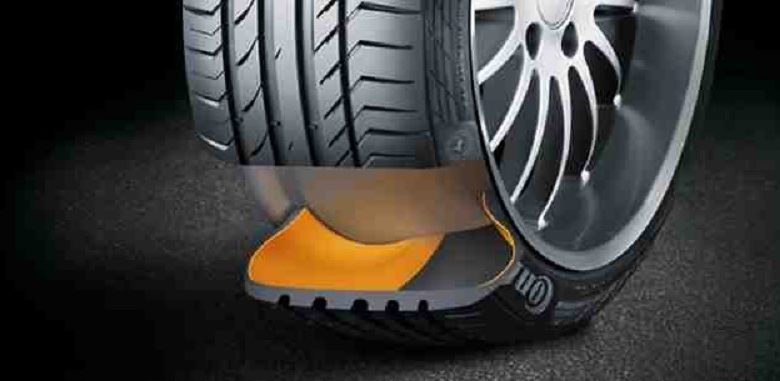What is a Run-Flat Tire? Exploring the Innovation in Tire Technology

A flat tire can ruin a pleasant journey, but thanks to developments in tire technology, there is now a far lower chance of this happening: run flat tires. The standards for car safety and driving convenience have been rewritten by this innovation. Let’s examine what a run-flat tire is, how it functions, and why many contemporary cars now come equipped with this crucial feature.
The Concept of Run-Flat Tires
Contrary to popular belief, run-flat tires are not a relatively new idea. The story of invention that led to the development of today’s sophisticated RFTs spans more than a century and demonstrates the dedication of the automotive sector to safety and ongoing development.
First Advancements
Early in the 20th century is where the story starts. Cars were now required to have pneumatic tires, the ones that are filled with air as we know them. But tire blowouts and punctures were previously known to be an annoyance and a risk. An appealing answer to a problem as old as the pneumatic tire itself was the concept of a tire that could continue to operate even after it was deflated.
The Development of Run-Flat Technology
With several patents for self-supporting tire designs submitted in the 1930s and 1940s, the idea of a tire that could run flat began to take shape. However, because to the limits of materials and technology at the time, these early designs were not feasible for scale manufacturing or widespread use.
The advancement of run-flat tire technology did not occur until the 1970s and 1980s. The creation of novel synthetic rubbers and reinforcing elements, in particular, along with advances in materials science, made it possible to produce tires that could bear the strain of operating without air pressure.
Current State and Future Developments
Run-flat tires are now more readily accessible and reasonably priced; many mid-range cars come equipped with them as standard equipment or as an option. With some manufactures boasting a better ride experience more akin to that of traditional passenger car tires, the current RFT is more sophisticated.
The development of run-flat tires will continue in the future, with an emphasis on producing lighter, more flexible, and even more dependable options. This century-old idea will undoubtedly continue to develop as demand for run-flat tires that provide safety without sacrificing vehicle performance or comfort rises in tandem with the popularity of electric vehicles and a growing emphasis on efficiency.
How Run-Flat Tires Operate
The magic of run-flat tires lies in their unique design and construction. They typically incorporate one of two design strategies to prevent a total collapse when punctured: self-supporting systems or auxiliary-supported systems.
Self-Supporting Run-Flats – The sidewall construction of these RFTs is strengthened. The vehicle’s weight can be momentarily supported by these reinforced sidewalls in the event of a puncture and tire loss of air pressure. Thick, heat-resistant rubber that can support the weight even in the absence of inflation typically makes up the reinforcement.
Auxiliary-Supported Run-Flats – This kind of RFT makes use of a robust rubber ring or another structure that can sustain the weight of the car in the event that the tire loses pressure. Although less prevalent in passenger cars, this technique offers an alternative to achieve run-flat capabilities.
Regardless of the type, these tires allow drivers to continue their journey to a safe location where they can address the tire issue—usually within a range of 50 to 100 miles, at a maximum speed of around 50 mph.
The Science of Run-Flat Tire Technology
Reinforced Sidewalls: The reinforced sidewalls of self-supporting run-flat tires are a distinguishing feature. After air is lost, this reinforcement enables the tire to keep its form and support the car. In addition to slowing down the pace of deflation, these sidewalls’ stiffness permits a regulated reaction to a puncture.
Heat Resistance: The production of heat as a result of increased friction is a significant problem when driving on a deflated tire. Because RFTs are designed with cutting-edge materials that dissipate heat more efficiently, they keep tires from breaking down under the pressure of continuous use after they lose air.
Bead Technology: The bead fit area – where the tire meets the rim – is also critically important. Run-flat tires often feature a more robust bead design that ensures the tire remains firmly seated on the rim, even without air pressure. This helps prevent the tire from coming off the wheel during a loss of inflation.
Tire Pressure Monitoring Systems (TPMS): An integral feature of the run-flat system, TPMS is not part of the tire itself. Run-flat tires should notify the driver of the loss of air pressure so that they can react appropriately because they can feel almost the same when deflated as when they are correctly filled.
Benefits of Running-Flat Tires
The most notable benefits of run-flat tires’ debut to the automotive industry are their enhanced convenience and safety.
Safety: RFTs lessen the possibility of tire blowout-related accidents. They let drivers to keep control and proceed to safety by offering stability even in the event of a puncture.
Convenience: They do away with the necessity for towing or emergency tire changing on the side of the road. This is especially helpful for people who are unable to change their own tires physically or in circumstances when stopping is dangerous.
Space and Weight Savings: Run-flat tires save space and weight on vehicles by eliminating the need for a spare tire, jack, or tire iron. This could lead to an increase in fuel efficiency.
Considerations and Limitations of Run-Flat Tires
While the benefits are substantial, there are also considerations to be aware of when using run-flat tires:
Ride Quality: RFTs can produce a harder ride than regular tires because of their stiff design, which some drivers may find less comfortable.
Replacement Costs: Not all tire shops carry RFTs or are equipped to install them, and they are frequently more expensive to replace than regular tires.
Restricted Repair Options: Compared to standard tires, certain RFTs have limited repairability or cannot be fixed after a puncture.
Weight: Because run-flat tires are usually heavier, handling may be significantly affected, and fuel efficiency may be slightly reduced.
Is Purchasing Run-Flat Tires the Correct Decision for You?
The choice of whether run-flat tires are appropriate for your car requires weighing your priorities. They can be a great option for people who value convenience and safety, especially in metropolitan settings where assistance is easily accessible within the run-flat distance range. Traditional tires, however, might be better for drivers who value ride comfort or are worried about replacement costs.
Run-flat tires provide an extra degree of convenience and security for drivers, and they mark a significant leap in tire technology. You may decide if they suit your driving demands and tastes by being aware of how they operate and the advantages they offer. Run-flat tire development is expected to further perfect the balance between safety, comfort, and efficiency as automotive technology continues to advance, influencing how we drive in the future.

